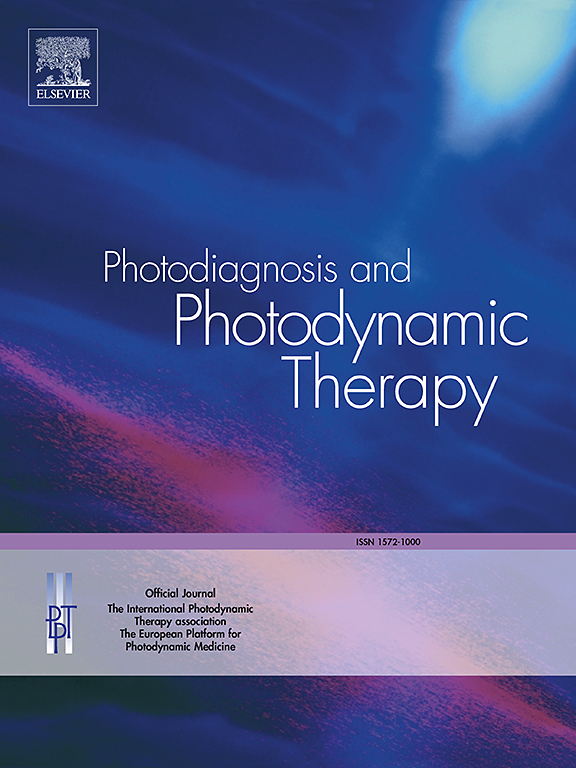根管消毒剂、纳米碳颗粒和Er: YAG激光对玻璃纤维桩与根管牙本质结合强度、马氏硬度、涂抹层去除的影响
IF 3.1
3区 医学
Q2 ONCOLOGY
引用次数: 0
摘要
目的:探讨Er:YAG激光、Temoporfin和碳纳米颗粒(CNPs)等非常规柱位消毒技术对管内牙本质玻璃纤维柱的马氏硬度(MH)、去除涂抹层(SL)、提高柱位推出强度(PBS)的效果。方法:用80颗拔除的人单根牙进行体外研究,对其进行修饰,进行标准化根管预备。将牙齿平均分为4个实验组:1组(NaOCl + EDTA)、2组(Er: YAG激光 + EDTA)、3组(Temoporfin + EDTA)、4组(CNPs + EDTA)。每个组都进行了消毒方案,然后使用纳米压痕测试评估马氏硬度(MH),通过扫描电子显微镜评估SL,并使用通用试验机(UTM)测试粘结强度。采用单因素方差分析和Tukey事后检验进行统计分析,以确定组间显著性水平。结果:第4组(CNPs+17% EDTA)的MH值为(0.25±0.02 GPa),显著优于第1组(0.13±0.02 GPa)和第3组(0.10±0.03 GPa)。第2组(Er: YAG激光 + 17% EDTA)在所有切片上表现出优越的涂片层去除,特别是在根尖三分之一处(1.94±0.38)。组2(9.98±0.14 MPa)和组4(10.08±0.21 MPa)顶出结合强度最高,组1(5.11±0.19 MPa)顶出结合强度降低。与Temoporfin和NaOCl相比,CNPs和Er:YAG激光治疗显著提高了牙本质硬度和结合强度,同时降低了SL。这一发现表明,将这些创新的消毒方法纳入根管治疗可能会提高玻璃纤维修复后的耐久性和成功率。本文章由计算机程序翻译,如有差异,请以英文原文为准。
Efficacy of canal disinfectants Temoporfin, carbon nanoparticles, and Er: YAG laser on martens hardness, smear layer removal, and bond strength of glass fiber posts to canal dentin
Aim
To investigate the effectiveness of unconventional post space disinfection techniques, specifically Er:YAG laser, Temoporfin, and Carbon Nanoparticles (CNPs), in improving Martens hardness (MH), eliminating the smear layer (SL), and enhancing the push-out bond strength (PBS) of glass fiber posts in canal dentin.
Methods
An in vitro study was conducted utilizing 80 single-rooted extracted human teeth, which were decoronated and subjected to standardized root canal preparation. The teeth were equally distributed into four experimental groups: Group 1 (NaOCl + EDTA), Group 2 (Er: YAG laser + EDTA), Group 3 (Temoporfin + EDTA), and Group 4 (CNPs + EDTA). Each group underwent disinfection protocols followed by assessment of Martens hardness (MH) using nanoindentation testing, SL evaluation via scanning electron microscopy, and bond strength testing using a universal testing machine (UTM). Statistical analysis was performed using one-way ANOVA followed by Tukey's post hoc test to determine the level of significance among the groups. A significant level of p < 0.05 was established.
Results
Group 4 (CNPs+17 % EDTA) showed a high MH value of (0.25 ± 0.02 GPa), significantly outperforming Groups 1 (0.13 ± 0.02 GPa) and 3 (0.10 ± 0.03 GPa). Group 2 (Er: YAG laser + 17 % EDTA) demonstrated superior smear layer removal across all sections, particularly in the apical third (1.94 ± 0.38). Push-out bond strength was highest in Group 2 (9.98 ± 0.14 MPa at the cervical level) and Group 4 (10.08 ± 0.21 MPa), while Group 1 showed a decrease in apical bond strength of (5.11 ± 0.19 MPa)
Conclusion
CNPs and Er:YAG laser treatments, in comparison to Temoporfin and NaOCl, significantly increase dentin hardness and bond strength while reducing SL. This finding suggests that the incorporation of these innovative disinfection methods into endodontic procedures may enhance the durability and success of glass fiber post restorations.
求助全文
通过发布文献求助,成功后即可免费获取论文全文。
去求助
来源期刊

Photodiagnosis and Photodynamic Therapy
ONCOLOGY-
CiteScore
5.80
自引率
24.20%
发文量
509
审稿时长
50 days
期刊介绍:
Photodiagnosis and Photodynamic Therapy is an international journal for the dissemination of scientific knowledge and clinical developments of Photodiagnosis and Photodynamic Therapy in all medical specialties. The journal publishes original articles, review articles, case presentations, "how-to-do-it" articles, Letters to the Editor, short communications and relevant images with short descriptions. All submitted material is subject to a strict peer-review process.
 求助内容:
求助内容: 应助结果提醒方式:
应助结果提醒方式:


